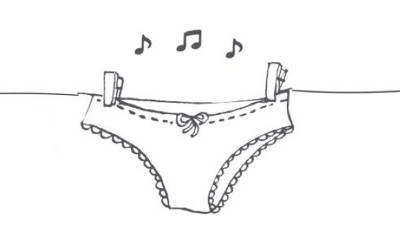How does the Transversus Abdominis help control stress urinary incontinence?
If you’re actively trying to recover from stress urinary incontinence, you probably spend an inordinate amount of time thinking about your pelvic floor, along with kegels kegels kegels. While it’s true that a strong pelvic floor is a very large piece of the continence puzzle, the pelvic floor is only part of a ‘team’ that keeps the pelvis stable and bladder leakage under control.
Our deep abdominal muscles, or transversus abdominis (TA), also contribute to urinary control. They’re the muscles that span between the lower ribs and top of the pelvis and wrap around the abdomen like a corset. When engaged correctly, the transversus abdominis stabilizes the low back and pelvis, cinching your core inward.
A recent study showed that engaging the transversus abdominis while pulling the pelvic floor up could control stress urinary incontinence in over 88% of study participants after 8 weeks of regular exercise. The exercises prescribed in the study were 40 repetitions (2 sets of 20 repetitions) of a 3-second co-contraction of both the transversus abdominis and pelvic floor muscles. The women were told to perform 1 session of exercise 3 times per week. This is a higher rate of success than pelvic floor only exercises, reported to be from 50% to 69% effective.
Work your transversus abdominus
To strengthen the transversus abdominus, it’s important to activate the muscle without engaging the surrounding muscles. While laying on your back with spine neutral, think about pulling your belly button down towards your spine.
To contract the transversus abdominis together with the pelvic floor, think about pulling your belly button towards you spine while pulling the walls of your vagina up – as if you’re pulling your muscles up through your body towards your head.
During transversus abdominis contraction, you won’t be able to see the muscles of your abdomen obviously contracting. In fact, if you see or feel any of the following, it’s likely that other abdominal muscles are doing the work instead of your trasnversus abdominis:
- abdominals bulging upwards like a ridge down the abdomen
- lower back arching
- pelvis tucking (ie. lower back flattening into the floor)
- muscle contraction felt when pressing fingertips just inward from the hips
As with any exercise regimen, you won’t see immediate improvement overnight. First your brain has to connect with the right muscles to isolate them, then they need to start working, then they need to work together with the pelvic floor. Consider working with a pelvic health specialist who can help identify the transverus abdominis and provide an exercise program that works for your individual needs.
Have you been strengthening your transversus abdominis? Let us know if it helps!
Sources:
Training the deep muscles of the Core
How to Contract Your Deep Abdominal Muscle
Transversus Abdominis – The Natural Corset Around Your Waist










